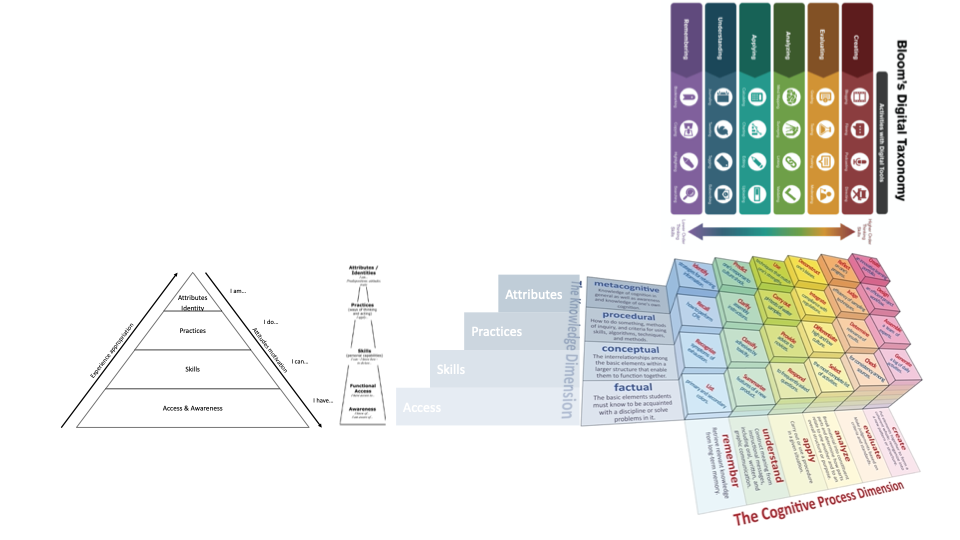 Linking Digital Literacies to Bloom´s Taxonomy?
Linking Digital Literacies to Bloom´s Taxonomy?
During this first topic I have been intrigued by the Digital literacies development model by Beetham and Sharpe, 2010. After reflecting on my own courses and how the students perceive online education and the different tools and systems that we introduce to students to support teaching and learning activities. I realize that this model might explain some resistance from students. Or, maybe it can be explained in the way I have heard from a a colleague at our university; ”Our class has been distance since start and have gotten used to trying to survive without teachers”. That might show one possible explanation to why students are not interacting during lectures and are not active in exercises that are not mandatory.
The digital literacy development model (Beetham and Sharpe, 2010) describes how students seem to develop higher order digital capabilities based on the foundation of access and functional skills. The pyramid model also help us to understand how to motivate students to try new technologies and gain new skills by challenges at the higher level of the pyramid. The model consists of four levels, starting from access and awareness (I have access to, I am aware of…), next is skills (personal capabilities, I can–I know how–to do/use…), third level is practices (ways of thinking and acting, I do/apply…) and the highest level in the pyramid is attributes & identity (predispositions, attitudes, trails, I am…). At the top level, the students have an attitude and identity in relation to their learning. It is suggested that the learners take advantage of the possibility to support the students’ learning with the use of technologies, since they already have a developed understanding of the value of doing so. Sharpe (2014) identified six attributes to this level; being engaged, connected, confident, adaptable, intentional and self-aware. In the digital literacies development models, the left-hand upward arrow highlights how access can drive development of skills, and results in effective practices, and in the next step a confident digital learner. The right-hand arrow downward shows that student’s attitude towards new technologies provides motivation to learn new practices and develop those skills needed to acquire access.
I was asking myself could we link this Digital literacies development model to Bloom´s and see how that can help us to understand how to support education. In the picture I tried to combine the model of learning objectives (by Rex Heer) and Blooms Digital Taxonomy and the digital literacy model.
I’m not sure if my picture make sense, but I was thinking that students motivation, digital literacy and high-order thinking skills should be able to plot agains learning objectives and what to look for when it comes to learning activities that can support students but also what we need to develop in terms of new digital competences…
References:
A Model of Learning Objectives–based on A Taxonomy for Learning, Teaching, and Assessing: A Revision of Bloom’s Taxonomy of Educational Objectives by Rex Heer, Center for Excellence in Learning and Teaching, Iowa State University
Integrating Technology with Bloom’s Taxonomy – Teach Online
https://teachonline.asu.edu/2016/05/integrating-technology-blooms-taxonomy/
Beetham, H. & Sharpe, R. (2011) ‘Digital literacies workshop’, Paper presented at the JISC Learning Literacies Workshop, Birmingham